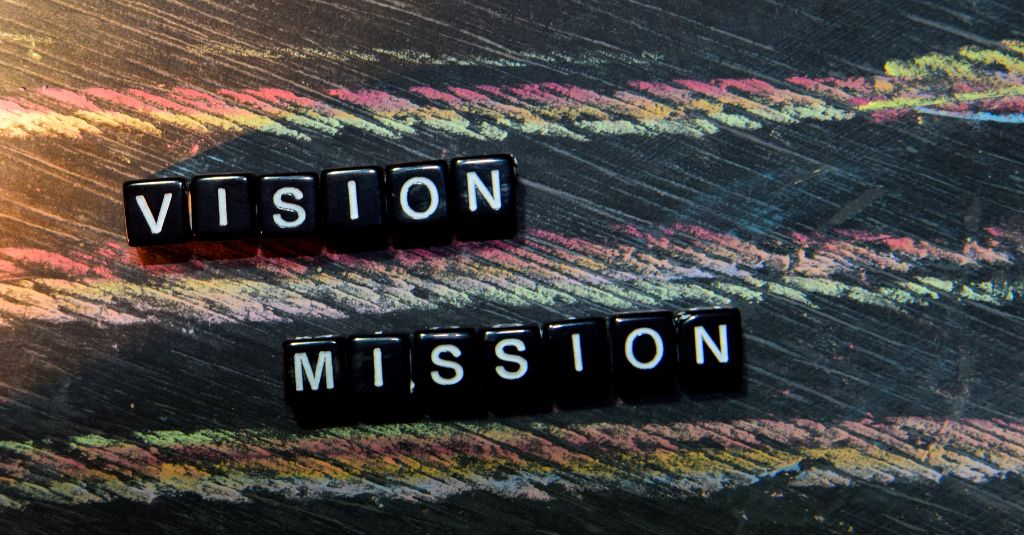Podcast: Play in new window | Download
Subscribe: Spotify | TuneIn | RSS
In this episode of Overgivers Anonymous, Angela Mondor (aka the Geeky Girl) breaks down the often-confusing concepts of vision and mission statements. If you’ve ever felt like these abstract ideas don’t quite click for your business, you’re not alone. Angela shares her experiences with them and offers a practical approach to help you create vision and mission statements that actually align with what you want for your business—and your life. Spoiler: it’s all about making sure both work together harmoniously.
Highlights:
- Why Vision and Mission Statements Matter – Angela explains how these two elements act as the foundation for creating a business you love while ensuring it runs the way you want.
- Vision: Your Business’s Endgame – A vision statement is about where you want your business to go and what it looks like once it gets there, giving you a guiding “true north.”
- Mission: The ‘How’ Behind the Vision – Unlike the vision, the mission is all about the actionable steps you’ll take to achieve your goals, providing a roadmap to your vision.
- Vision vs. Mission: Breaking It Down – Angela demystifies these often-confused terms by comparing the vision to the big-picture dream and the mission to the nitty-gritty of how you’ll make it happen.
- The Power of Personalization – Your vision and mission should reflect your desires—not what others expect from you or your business.
- Forget the Revenue Goals – Vision statements aren’t about money or numbers; they’re about the bigger picture, like how you want to spend your time and what kind of impact you want to make.
- Actionable Mission Statements – A solid mission statement answers key questions like: What problem are you solving? Who are you helping? How are you doing it?
- Aligning Daily Decisions with Your Vision – Having a clear vision helps you evaluate business opportunities and make faster, more informed decisions.
- Flexibility is Key – Both vision and mission statements should allow for flexibility so you can adapt when life throws you a curveball or when goals evolve.
- Consistency and Reassessment – Angela suggests reviewing and revising your strategic plan monthly and quarterly to make sure you’re still on the right path to your vision.
Vision and mission statements don’t have to be intimidating or set in stone. Angela encourages listeners to make them personal, flexible, and reflective of what they truly want—both in their business and life. The ultimate goal? To create a business you love waking up to every day that also supports the life you want. Tune in and get inspired to craft vision and mission statements that work for you.
Click Here for the transcript
Welcome to the Overgivers Anonymous podcast. My name is Angela Mondor, also known as the Geeky Girl. In this podcast, we’re going to be talking about some amazing things to help you get over overgiving.
And welcome to this episode of the Overgiver’s Anonymous podcast. My name is Angela Mondor and I’m also known as the Geeky Girl. Today I want to talk to you about something that I feel it’s really important to a business to ensuring that the business runs the way you want your business to run. And that’s about your vision and mission statements inside your business.
The idea is that we want to use our vision and our mission statements so that we can continue to create what we want to build the type of business that we want to see, that we want to work in, that we want to be part of. All of this. So when I’m talking about your vision statement. It’s about talking about where you want the business to go.
How do you want that business to look, right? Like where, we’re looking at end in mind stuff. I want to think about Stephen Covey, right? What’s that end in mind? Where are we going? So thinking about that, looking at where we’re going to head. The important thing about that in the vision is it allows you to continue to make decisions on whether or not what you’re doing matches with the vision.
Okay. It gives you a true north. It gives you a way to say, yes, we’re on the right path because we’re working towards that vision of where we want the business to go. The mission on the other hand is more about how we do the things that we do in order to make it to the vision. Okay, it can get a little crazy and depending on your neurodivergent brain mine doesn’t like concepts like vision and mission because they seem a lot the same to me.
And when I, when I’m trying to put them into words, it’s not very good for my brain. So let me break it down the way it helps me and maybe that’ll help you. So that vision concept, when we’re thinking about what that vision of the business looks like. This is, this is what is important to understand from a vision.
It’s not, okay, I’m going to do this and I’m going to do that. It’s more about the feeling of the business on where you want to head. Both your vision and your mission should reflect your desires. Not what people think you should do. Obviously, this is what you want to do for your own business.
Okay. And we don’t want to be talking about revenue goals or any of those kinds of things when we’re talking about the vision, we are looking about, you know, what kind of people do we want to help? What kind of things do we want to provide for the people that we’re helping? How can we. You know, like what are the, what’s that big picture of what does that look like?
So, you know, what kind of impact do you want to leave? And what makes you excited about your business? And then, you know, spend, how do you want to spend your time day to day? These are all kinds of concepts that you want to think about while you’re doing these. So when you’re writing your vision statement, you want to focus on what you want your business to look like.
in the future. Some of us can’t think too far ahead, so you don’t have to do a five or ten year goal if you don’t want to. You can do a one to three if that’s what makes you feel better. But we do want to see where do we want to head, okay? So it’s, it’s like taking trip, okay? I talk about this a lot in terms of goal setting as well, but in terms of your vision, it’s like you can say, I want to go on a holiday and that holiday is going to look like this, and here’s, You know, the type of feelings I want to have in the holiday and here’s the trajectory, those kinds of things.
Like maybe you’re like, I want to go to Paris and here’s, here’s why I want to go to Paris and here’s all the things about Paris that are really exciting and here’s the, you know, how I want to feel while I’m in Paris. That’s like your The, the dream, right? That vision. So if you’re thinking about your business, you might think of, I want more flexibility in my schedule or I want to focus on creating a sustainable business.
Maybe you want to create a business that has the ability to hand it down to your children. Maybe you want to create a business so that you can be more philanthropic in your, in your you know, where you live or in, on the planet somehow, or maybe you want to build a business where you travel. So thinking about.
That as your long term vision. Okay, then you want to connect the dots when we’re talking about the mission pieces. So when your mission statements, it’s going to outline how you’re going to achieve your vision behind the scenes. And so you want to give, Your mission gives you structure to the vision and so you’re going to think about how it’s going to support your vision and the growth goals, obviously.
So if you’re, you know, you’re trying to get to a certain place, you need to know how you’re going to make that happen, and that’s where the mission comes in. So your mission needs That needs to be actionable. So what problem are you solving? Who are you helping? That audience how are you solving their problems right in the mission?
In the vision, you’re thinking more about the bigger picture of what those things are, but inside the mission were action. These are the actions that we’re going to take. So. If your vision is to create more flexibility in your life, then your mission might focus on building systems or delineating tasks or creating sustainable workflows.
And that’s going to help you to get to the vision of, you know, having more flexibility in your life and business. Okay. There’s been plenty of times in my business when I’ve thought about how does my vision You know, where is my vision? Where do I want to go with this? How does that align to the mission and the goals ultimately through, you know, strategic planning and all those kinds of things?
And I know that when I’m not working from a place of understanding of what this vision is. And wondering what the mission is, then I tend to be less able to make quick decisions, first of all, and I’m not able to make decisions that align with my goals very easily, because I’m not able to compare these opportunities to Something bigger, something different.
I look at the opportunity and go, that sounds like it’s right, or somebody said I should do this. Those are different than, oh, will this opportunity actually get me closer to where I’m heading? Will this opportunity actually give me what I need in order to be able to take those action steps to get me to what that vision looks like?
Okay, so that’s why the vision and mission is so important. Why these things are important to understand and have in your business. They don’t have to be creepy, huge, grandiose things that you post. You don’t have to post them on social media or you don’t have to create a plaque for them or anything like that.
But understanding what it looks like for you. And you want to be able to keep these things flexible. Because things change, you want to be able to allow for growth and change in your business. Let’s say, for example, right now in our life, our current plan, our current vision, is that my husband’s going to retire in about two years.
And I say about because flexibility. But so the idea is that He’s going to retire from being a teacher in about two years and we want to move from the central, central Canada. We’re going to move east to the east coast and we have ideas on what that’s going to look like for a vision for our family.
Not necessarily business, although business fits into it in a different sort of slight way, but the vision for the family. Is this, and I’ve said multiple times to my husband, I want lots of land and a little house. These are some things that go into the vision piece of it. The mission comes down to when we start to look at how are we going to make that happen.
What does retirement look like? What is the, you know, what’s his retirement benefit look like? You know, what’s he going to do when he retires? All those sorts of things. So But we have to be flexible because things can change. It’s possible that his trajectory for retirement might change depending on finances.
It might change based on offers from the company or from the school division. It might change based on other family issues that are happening, who knows. So we have to be flexible while we’re looking at this change. And maybe we need to be flexible, even when we land on the East Coast, maybe we can’t get the big land in the little house in the beginning.
Maybe we just need to get the okay land in the okay house to begin with before we find the big land in the little house. Who knows? We have to be flexible in our visions and in our missions so that when we do slide off the coast, This the road a little bit we can come back on right so it is important to revise and revisit and constantly view this I Suggest that you are always building at least a strategic plan that is monthly But revisiting it quarterly as well as monthly because then you’re always working towards that trajectory And if something doesn’t feel right you can switch it you can change it You can pivot and then that way you can be authentic to yourself and to your clients.
You can be authentic to who you are and who, what kind of life you want to live alongside with what kind of business you want to grow. So I hope that you’ve taken away some cool things about the vision and mission statements that you’ve gotten a good little bit of information about the difference in case you were struggling with it.
Like I I said that I’ve struggled with it a lot over the years in terms of what they actually mean. And hopefully you are able to say, you know what, I actually do have a vision. It does look like this. Or I have a vision and no mission. Or I have a mission, but oh my gosh, I need a vision. Whatever the case may be that you’re able to look at yourself and your business and where you’re at.
And really look at how you can create these things for yourself so that you can run a business that you love so that you can have a business that you enjoy waking up to every day and have the life you want as well, because to me, having a fantastic business and no life is not how I want to live. And I don’t want to have a fantastic life and a crappy business.
I want to enjoy my business along with. The life that I have as well. So I’m not, I’m not willing to give on either side. I want them both to work and there’s some give and take between them every once in a while. But it is important to find that balance as much as possible so that I can create wonderful things, both in my business and in my life and that the visions.
That I choose are flexible enough so that I can make adjustments as I move through them. I hope you have a fantastic week. I hope you got some stuff out of this and I look forward to talking to you next week. Have a great week.


